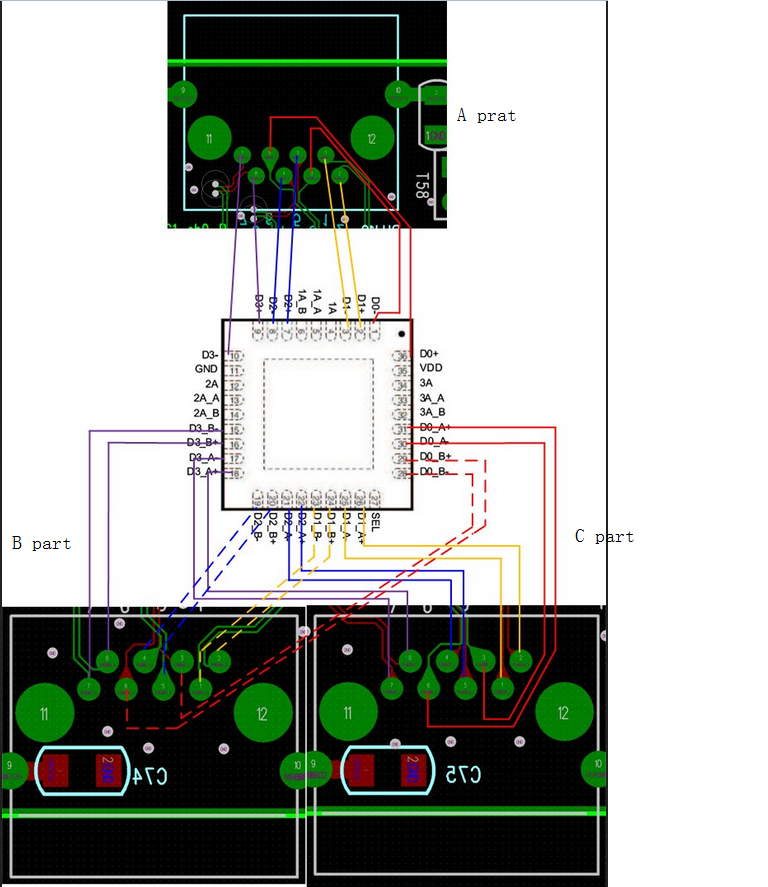Other Parts Discussed in Thread: TS3L500
Hi Team,
The customer is using TS3DV20812 for gagabit LAN signal switching. The attach is his block diagram.
If there is not the TS3DV20812 device, the A part can connect the B part. But when the Sel pin is the high level, the A part cannot connect the B part.
For the Sel pin, the high level voltage is 3.2V and the low level voltage is 0V. VCC is 3.3V for TS3DV20812.
What is the reason? How to solve the issue?
Best Wishes,
Mickey Zhang
Asia Customer Support Center
Texas Instruments



